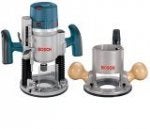Was wondering about some of the differences between these two routers, aside from the obvious: 1617 has two different bases, 1613 has a Makita/Hitachi-type housing....
This will be primarily used free hand.
Thanks,
Rich in VA
This will be primarily used free hand.
Thanks,
Rich in VA







